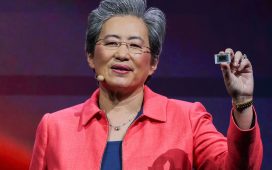Ever since the Benz Patent-Motorwagen chugged into existence, the motoring world has kept us enthralled with weird and wonderful machines that pushed the envelope of what was deemed possible. Some cars were born legends, while others grew into the role.
We looked back on the last 100 years of motoring and picked some of the most influential cars from each decade. Every car here has left an indelible mark on the motoring industry that has affected everything from engines, to body styling, and in-car tech.
All vehicle specs and information were sourced from the relevant manufacturer.
10 Volkswagen Beetle
1930s
|
Engine |
1.0-1.6-liter flat-four |
|---|---|
|
Horsepower |
22.5 – 60 hp |
|
Torque |
N/A |
|
0-60 |
20-40 seconds estimated |
Born out of a need to get Germany’s masses mobile, the Volkswagen Beetle had a rather troubled and prolonged development period. The first cars were delivered just as the Second World War was commencing, so production for civilian use only got going during 1945. The Beetle’s basic design was intended to be easy to run, cheap to maintain, and suitable for a family of four. It proved a monumental success, with over 21 million cars being produced, the last car rolling off the line in 2003.
The rear-engined, rear-wheel drive layout formed the basis of the Porsche 356, and greatly influenced the development of the Porsche 911. It also influenced countless other models. The Beetle itself was constantly updated, but the basic design and layout remained unchanged throughout production. In certain parts of the world they are still used as daily transport.

Related
Volkswagen’s Rarest Hot Hatch Was A Cute Track-Ready Monster
Volkswagen has graced the world with countless hot hatches over the years, though its rarest is a real beast with one of VW’s greatest engines.
9 Jaguar XK 120
1940s
|
Engine |
3.4-liter Inline-6 |
|---|---|
|
Horsepower |
160 hp |
|
Torque |
n/a |
|
0-60 |
10 seconds est |
The XK120 sports car launched in 1948 launched Jaguar from a respectable British auto manufacturer into a world-renowned one. It was the fastest production car of the 1940s. That ‘120’ in its name refers to the maximum speed it could achieve. Unlike most powerful cars of that era, the Jag used a relatively small capacity, a 3.4-liter inline-six engine. It was a brand-new motor, technologically advanced and designed specifically for the XK. It remained in production in various forms until 1992. The XK120 proved itself on and off the track, with subsequent XK140 and XK150 variants pushing power and performance to new heights. The stunning E-Type was developed from this model, and many competitors copied the XK formula to develop rivals of their own.
8 Mercedes 300 SL
1950s
|
Engine |
3.0-liter Inline-6 |
|---|---|
|
Horsepower |
240 hp |
|
Torque |
n/a |
|
0-60 |
9-10 seconds |
Introducing fuel-injection and gullwing doors to production cars for the first time, the Mercedes-Benz 300 SL was a technological marvel that showcased the German marques’ capabilities to great effect. The 3.0-liter six-cylinder engine was based on an existing design, but used dry-sump lubrication, mechanical fuel-injection and many internal upgrades to give it much more power.
Capable of 162 mph, this was the fastest car of its day, and paved the way for a range of fast Grand Touring Mercedes models. The 300 SL proved to be a competent race car too, with modified versions winning several rally and long-distance events.
7 Ford Mustang
1960s
Specifications: 1965 base V8
|
Engine |
4.3-liter V8 |
|---|---|
|
Horsepower |
200 hp |
|
Torque |
n/a |
|
0-60 |
9 seconds est |
The original Pony Car was developed as a small car that could seat four, have a sporty design, be available with several power and luxury options, and cost a reasonable amount. The design team ticked all these boxes and the Ford Mustang was an instant hit with consumers. Selling over 400,000 in its first year, and then topping the 1 million mark the following year. While the base models were underpowered, customers could choose from countless options to increase performance, and an entirely new affordable performance segment was born. The Mustang has remained a mainstay in Ford’s lineup for decades, and despite some low points, it is still fulfilling its promise as the practical performance car for the masses in 2024.
6 Lamborghini Countach
1970s
Specifications: LP400
|
Engine |
3.9-liter V12 |
|---|---|
|
Horsepower |
370 hp |
|
Torque |
266 lb-ft |
|
0-62 |
5.4 seconds est |
The 1960s Lamborghini Miura was the first mid-engine road car ever, and is often referred to as the world’s first supercar. It must have seemed like an impossible task to top such a ground-breaking model, but the Lamborghini Countach was arguably even more impressive. Early models used an uprated version of the Miura’s 3.9-liter V12, but engine capacity and power soon rose, making the Countach one of the fastest production cars throughout its long production span. Its stunning exterior design, including those iconic scissor doors, influenced automotive design for decades. Later models were festooned with wings and outlandish body kits, but the original design remains as crisp as ever.
5 Porsche 959
1980s
|
Engine |
2.8-liter twin-turbo flat-six |
|---|---|
|
Horsepower |
444 hp |
|
Torque |
369 lb-ft |
|
0-60 |
3.6 seconds |
Many modern sports cars share their basic layout with the Porsche 959. All-wheel drive, turbocharging and complex electronic systems are commonplace in today’s fast cars, but the 959 was the first road car to implement these features in one all-dominating package. Whereas the contemporary Ferrari F40 was a stripped-out race car for the road, the Porsche 959 was a technologically advanced supercar with all the luxuries you could wish for. It was initially developed to race in the ill-fated Group B rally class and, as such, proved to be an excellent race car, too.
The 959 had lightweight aluminum and Kevlar composite body panels, advanced aerodynamics for stability at high speeds, adjustable ride height, and magnesium alloy wheels. It remains an impressively fast car today, even compared to the latest crop of supercars.

Related
10 Reasons Why Porsche Is The King Of Turbocharging
Most automakers these days sport a turbocharged version in their line of vehicles, and they all have Porsche to thank for that.
4 McLaren F1
1990s
|
Engine |
6.1-liter V12 |
|---|---|
|
Horsepower |
618 hp |
|
Torque |
479 lb-ft |
|
0-60 |
3.2 seconds |
Designed to be the ultimate driver’s car, the McLaren F1 was also the quickest and fastest car of its time. By quite some margin. Part of this comes down to the generous budget allocated to its design and development, but it was the laser-guided focus of designer Gordon Murray that made the project such a massive success.
Every aspect of the design was meticulously planned, and the end result was a car so far ahead of its rivals that it remains the fastest naturally aspirated production car to this day. The carbon-fiber chassis was a production car first, and the lightweight body shell gave the F1 a power-to-weight ratio that not even turbocharged supercars from a decade later could match. Despite not being designed to go racing, it won outright in various racing series, including the 24 Hours of Le Mans. The racing cars were so closely based on the road cars that many were subsequently converted back to road-spec.
3 Bugatti Veyron
2000s
|
Engine |
8.0-liter quad-turbo W16 |
|---|---|
|
Horsepower |
987 hp |
|
Torque |
922 lb-ft |
|
0-60 |
2.5 seconds |
The Bugatti Veyron was a car built not just to show what was technically possible at the time, but to challenge the established automotive hierarchy. Developed by the VW Group and Bugatti, the Veyron was the sort of project that seemed impossible until it became a reality. Road cars that could develop close to 1,000 hp, would accelerate to 60mph in well under 2 seconds, and could top 250 mph were the stuff of computer games. The Veyron’s engineers decided that the best way to achieve these goals was through the tried-and-tested methods of massive capacity and huge boost.
The tires would need replacing every 18 months regardless of mileage, which includes the rims, while oil changes cost as much as a new Nissan Versa. The W16 engine was complex and unsuitable for anything but another hypercar, like the Chiron. So, in this case, it wasn’t so much the technology of the Veyron that changed the automotive world, but the fact that it could achieve those fantastical power and acceleration figures that convinced other manufacturers it was indeed possible.
2 Tesla Model S
2010s
|
Engine |
Single Electric Motor (2012 Signature Trim) |
|---|---|
|
Horsepower |
362 hp |
|
Torque |
324 lb-ft |
|
0-60 |
5.4 seconds est |
Tesla Motors was founded in 2003, and its first car, the Tesla Roadster, arrived in 2008. While this electric sports car was impressive for its time, it was the Model S sedan that truly paved the way for the future of EVs. Released in 2012, the Tesla Model S had no direct rival. It could accelerate like a supercar, yet would seat five adults in comfort, and had a minimalist interior design almost completely devoid of physical buttons. Twelve years after its release, virtually every major auto manufacturer has a model that fits this description.

Add CarBuzz to your Google News feed.
1 Rimac Nevera
2020s
|
Engine |
4 x permanent-magnet electric motors |
|---|---|
|
Horsepower |
1,877 hp |
|
Torque |
1,726 lb-ft |
|
0-60 |
1.74 seconds |
The Rimac Nevera is a towering technological achievement, all the more impressive because it is Rimac Automobili’s second production car. Staggering, world-beating performance is one thing, but the advanced technology developed by Rimac is what really sets it apart from the rest.
Rimac Automobili was founded in 2009 by Mate Rimac, a Croatian entrepreneur who has developed several cutting-edge EV technologies that have gotten the attention of some major manufacturers. The Volkswagen Group, Hyundai Motor Company, and Kia Motors have all invested in the company, with the latest joint venture with Bugatti ensuring that Rimac Automobili will be an integral part of the motoring industry for the foreseeable future.

Related
10 Hypercars The Rimac Nevera R Beats To 186 MPH
The Rimac Nevera R is the Croatian manufacturer’s most potent model in its fleet. Here are 10 hypercars that it can beat to 186 mph.
Sources:
Bugatti, Jaguar, Ford, Mercedes, Volkswagen, Tesla, Rimac, McLaren, Lamborghini










